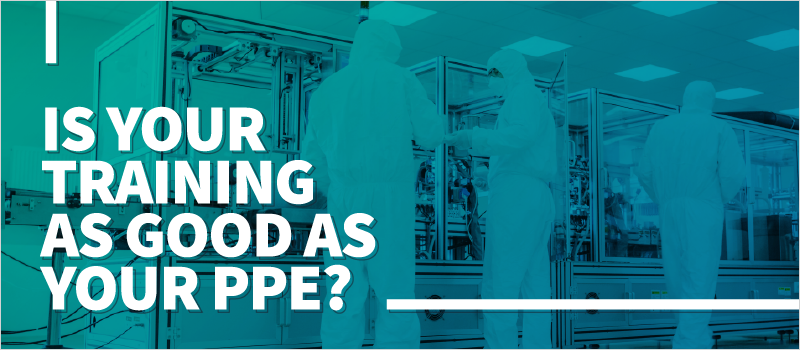
You want your crew to be safe. While technology in the Personal Protective Equipment (PPE) space continues to grow and increase in effectiveness, if your people aren't educated in these solutions and aren’t aware of best safety practices outcomes will not improve.
This is why our PPE off-the-shelf course is an answer to this problem. Whether your industry PPE is a helmet and seatbelt or an arc flash suit, our newest course can help educate and avoid the byproducts of risk homeostasis.
Risk homeostasis is a hypothesis posited by Gerald J.S. Wilde, a professor of psychology at Queen's University, Ontario, Canada, dealing with the notion that every person has an acceptable amount of risk that they find tolerable. If the perceived level of risk in one part of a person's life changes, they will compensate by either reducing or increasing the amount & severity of risks they take - all in order to maintain an equilibrium of perceived risk.
Personal Protective Equipment (PPE) comes in various types, each protecting specific parts of the body.
After completing this eLearning Brothers safety training course, your learners will:
- Understand PPE requirements
- Be able to describe a basic hazard assessment
- Know how to select appropriate PPE for different parts of the body
This course is complete with hard-hitting facts presented in a logical matter-of-fact manner.
A Bureau of Labor Statistics report indicated that 84% of head injuries were sustained when the worker was not wearing a hard hat. Use your head for better things. Any time there is potential for something to fall and hit you on the noggin, wear a hard hat.
We also outline the Occupational Safety and Health Administration (OSHA) requirements related to different types of PPE. This will help you systematically assess your workplace hazards and select the appropriate PPE to protect your employees from those hazards.
You’ll learn to:
- Assess the workplace for hazards
- Implement engineering controls and work practices to control or eliminate these hazards to the extent feasible
- Select appropriate PPE to protect employees from hazards that cannot be eliminated for controlled
- Inform workers why the PPE is necessary and when it must be worn
- Train workers how to use and care for the selected PPE and how to recognize PPE deterioration and failure
- Require workers to wear the selected PPE in the workplace
Every person in the workplace, whether in manufacturing, administrative or others, is responsible for their own safety. Keep in mind that PPE is a cautionary step, so it is better to be educated on how to be safe rather than relying too much on the equipment alone.
A fair amount of hands-on training is still required and we can help you with that through our Instructor-Led Training (ILT) and additional materials. Every course includes a facilitator guide (via an editable Microsoft Word document), ILT PowerPoint Presentation, Participant Workbook (via an editable Microsoft Word document), and other supplemental materials.








